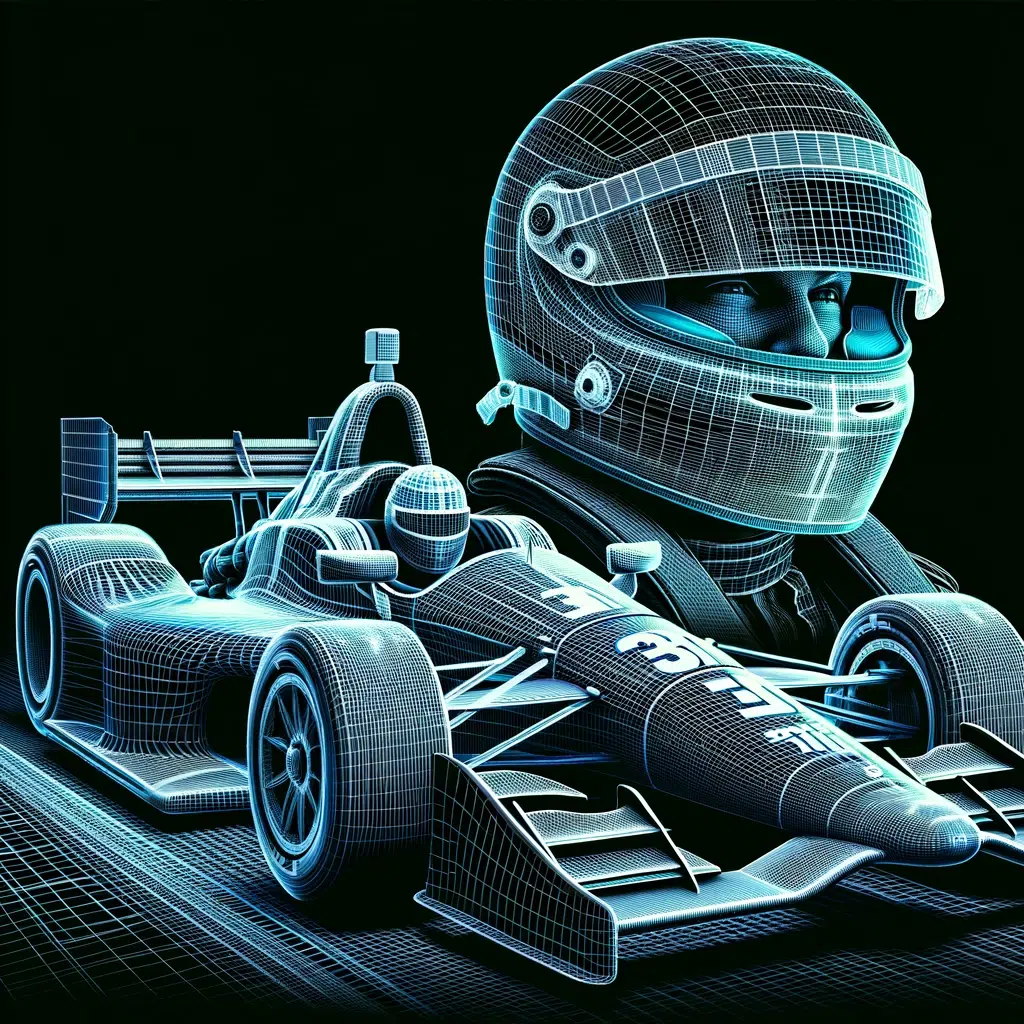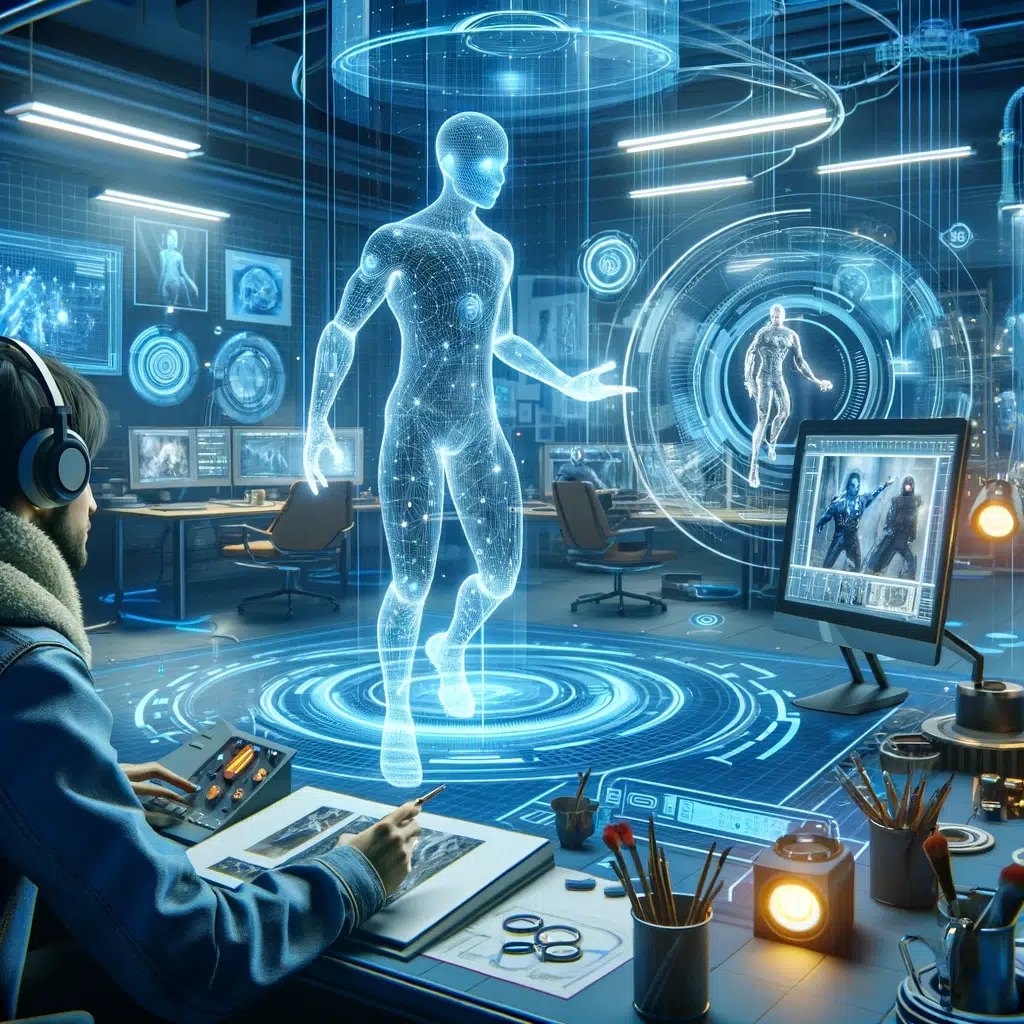How to Create 3D Explainer Video Characters

Table of Contents
Key Takeaways
| Keypoint | Description |
|---|---|
| Introduction | The Rise of 3D Explainer Videos, Importance of Characters in Storytelling |
| Understanding Your Audience | Identifying Target Viewers, Tailoring Characters to Audience Needs |
| Conceptualizing Your Character | Character Roles and Functions, Designing Personalities and Backstories |
| Designing 3D Characters | Basics of 3D Modeling, Choosing the Right Software, Texturing and Materials |
| Rigging and Animation | The Rigging Process, Basic to Advanced Animation Techniques |
| Adding Voice and Sound | Matching Voice to Character, Incorporating Sound Effects |
| Integrating Characters into Explainer Videos | Scripting for 3D Characters, Scene Composition and Character Placement |
| Using 3D Characters for Branding | Building a Brand Identity with Characters, Consistency Across Media |
| Feedback Loop and Iterations | Testing with Audiences, Refining Based on Feedback |
| Legal Considerations | Copyrights and Trademarks, Ensuring Originality |
| Future Trends in 3D Character Creation | AI and Machine Learning Innovations, Virtual Reality and Interactive Videos |
| Resources for 3D Character Creators | Online Tutorials and Courses, Communities and Forums |
| Conclusion | The Impact of 3D Characters in Explainer Videos |
How to Create 3D Explainer Video Characters
In the digital age, 3D explainer videos have emerged as a powerful storytelling tool, offering a visually immersive experience that captivates viewers. The core of these videos’ success lies in their characters, which can convey complex messages in an engaging and relatable manner.
This article explores the multifaceted process of creating 3D characters that breathe life into explainer videos.
Understanding Your Audience

Creating impactful 3D characters begins with a deep understanding of your audience. Identifying your target viewers’ demographics, interests, and challenges allows you to design characters that resonate on a personal level.
Tailoring characters to reflect your audience’s expectations ensures that your message hits home, making the explainer video an effective communication tool.
Conceptualizing Your Character
Character Roles
Character roles are pivotal in shaping the journey you intend to take your audience on. Each role comes with its own set of expectations and narrative functions:
- Hero: The hero is often the protagonist, whose journey is central to the story. This character faces challenges, learns lessons, and undergoes growth, reflecting the journey of the target audience.
- Mentor: Mentors provide guidance, wisdom, and support to the hero, often embodying the values and messages your video aims to convey. They are pivotal in demonstrating product benefits or explaining services in explainer videos.
- Comic Relief: Characters designed for comic relief offer a break from the narrative’s tension, making the information more digestible and keeping the audience engaged. Their light-hearted nature can make technical or dry content more accessible.
Personalities and Backstories
Creating a character with a well-rounded personality and a rich backstory is essential for audience engagement. This process involves:
- Personality Traits: Define your character’s traits based on the role they play in the narrative and how you want the audience to perceive them. For example, a hero might be brave and curious, while a mentor could be wise and nurturing. Personality traits should align with the message you want to convey through your explainer video.
- Backstories: A character’s backstory adds layers of depth, making them more relatable and memorable. It explains why they behave in certain ways or have specific goals. For explainer videos, backstories can be succinct yet impactful, providing context for the character’s motivations or challenges they’ve overcome. This can be particularly effective in videos that aim to solve a problem or address a pain point, as it establishes empathy and connection with the audience.
- Aligning with the Narrative: Every aspect of your character’s role, personality, and backstory should serve the broader narrative of your explainer video. The character’s journey should parallel the audience’s experience or the problem-solving process your product, service, or idea offers. For instance, if your video aims to introduce a new software solution, your hero could be facing a challenge that mirrors potential users’ frustrations, guiding viewers through the discovery, learning, and resolution phases as they interact with your product.
The conceptualization phase is where the heart and soul of your 3D character are formed. It’s a creative process that requires thoughtfulness and an understanding of storytelling principles.
By carefully crafting your character’s role, personality, and backstory, you set the stage for a compelling, engaging explainer video that resonates with viewers on an emotional level, making your message unforgettable.
Designing 3D Characters

The design phase of 3D characters is a blend of artistic vision and technological prowess. It transforms conceptual sketches into tangible, animated personas.
Here’s a streamlined overview:
3D Modeling
- Software Selection: Blender, Maya, and ZBrush are popular choices for crafting detailed 3D models. Each tool offers unique features suitable for different aspects of modeling, from basic shapes to intricate details.
- Modeling for Personality: The model should encapsulate the character’s essence. For a hero, strong, confident poses might be key; for a mentor, a wise and approachable look is essential. The character’s role guides the modeling process, ensuring their appearance aligns with their narrative function.
Texturing and Materials
- Adding Realism or Style: Textures bring the model to life. Whether aiming for photorealism or a specific art style, textures and materials contribute to the character’s visual appeal and emotional impact.
- Detailing: This process involves mapping out skin, clothing, and accessory textures, adding color, and defining how light interacts with the character. The right texture can make a character feel rugged, soft, aged, or futuristic, further enhancing their role and relatability.
In designing 3D characters for explainer videos, attention to detail in both modeling and texturing is paramount. This not only ensures characters are visually captivating but also that they seamlessly fit into the video’s world, enhancing the overall storytelling experience.
Rigging and Animation
Turning static 3D models into dynamic characters involves two crucial steps: rigging and animation. This process is where characters gain the ability to move and express, becoming truly engaging elements of your explainer video.
Rigging
- Adding Bones: Rigging introduces a skeleton structure to your character. This “digital puppetry” framework allows for realistic movement and poses, mirroring how bones and muscles work in real life.
- Facial Rigging: For expressions, facial rigging is key. It enables characters to convey emotions through facial movements, enhancing their ability to connect with the audience.
Animation
- Keyframe Animation: The traditional method where animators define start and end points for movements. It’s great for custom animations that emphasize specific actions or emotions.
- Motion Capture: Utilizes real-life motion data to animate characters, offering natural, fluid movements that are hard to achieve manually. Ideal for complex actions like running or jumping.
- Procedural Animation: For repetitive or background actions, procedural techniques can automate movement, saving time while maintaining quality.
Rigging and animation are the heartbeats of character-driven storytelling in 3D explainer videos. They transform models from static figures into lively personas that can move, interact, and emote, making your message not just seen, but felt.
Adding Voice and Sound
Voice acting and sound effects significantly contribute to the character’s believability. Selecting the right voice can complement the character’s personality, while sound effects add an extra layer of realism. This auditory dimension is crucial for immersive storytelling.
Integrating Characters into Explainer Videos
For characters to effectively contribute to your explainer video, their integration into the narrative and scenes must be deliberate and thoughtful. This ensures they enhance the storytelling without overshadowing the message.
Scripting
- Character-Driven Narratives: While crafting your script, consider how your characters can best serve the story. They should be active agents, driving the plot forward and engaging the audience through their decisions and growth.
- Dialogue and Interaction: Ensure the dialogue reflects each character’s personality and contributes to their development. How characters interact with each other can also underscore the video’s key messages or themes.
Scene Composition
- Visual Storytelling: The placement of characters within each scene is critical for visual storytelling. It’s not just about where they stand but how they interact with their environment and other characters. This interaction should reinforce the video’s message and keep the audience focused on the central narrative.
- Maintaining Balance: Achieving a balance between the characters and other visual elements ensures the scene is not cluttered and the audience’s attention is directed appropriately. This balance helps in maintaining a clear, coherent storyline that is easy for viewers to follow.
Integrating characters into explainer videos with careful consideration to scripting and scene composition allows for a more dynamic, engaging, and effective storytelling experience. Characters become the bridge between the message and the audience, making complex information relatable and memorable
Using 3D Characters for Branding

3D characters offer a unique opportunity to personify your brand and create a memorable identity that stands out in a crowded marketplace. By embodying the brand’s values and messaging, these characters can communicate complex ideas in an accessible and engaging manner.
Their versatility allows them to be adapted across various platforms, from social media campaigns to interactive web experiences, providing a cohesive brand experience that resonates with audiences.
Moreover, the emotional appeal of 3D characters can significantly boost marketing efforts. Characters with well-crafted personalities and stories can evoke feelings of trust, excitement, and empathy, making your brand more relatable.
The emotional connection is crucial in building a loyal customer base and encouraging brand advocacy. Through strategic storytelling, 3D characters can transform ordinary brand interactions into meaningful relationships, fostering a sense of community among your audience.
Incorporating 3D characters into branding also opens up creative avenues for storytelling. Whether it’s through episodic content, interactive ads, or immersive experiences, characters can be the protagonists of narratives that highlight product features, showcase brand milestones, or explore user scenarios.
This not only keeps the content fresh and engaging but also reinforces the brand’s message in a consistent and dynamic way. Through these narratives, brands can create a rich, immersive world that audiences want to return to, further solidifying brand identity and loyal
Feedback Loop and Iterations
Creating compelling characters is an iterative process. Initial designs should be tested with target audiences to gather feedback, which is invaluable for refining and perfecting your characters.
Legal Considerations
When creating characters, it’s essential to navigate copyright and trademark laws carefully to ensure your characters are original and do not infringe on existing intellectual property.
Future Trends in 3D Character Creation

The future of 3D character creation is poised for significant evolution, primarily driven by advancements in artificial intelligence (AI) and virtual reality (VR).
These technologies are not just enhancing the visual quality of characters but are revolutionizing the way we interact with digital narratives. AI is enabling creators to infuse characters with more lifelike behaviors and autonomous decision-making capabilities, allowing for more dynamic storytelling.
At the same time, VR is opening up new avenues for immersive character experiences, where users can step into the story and interact with characters in a fully realized 3D environment. Together, AI and VR are set to expand the creative possibilities for 3D character creation, offering storytellers powerful tools to engage audiences in innovative ways.
Resources for 3D Character Creator
In addition to the platforms mentioned, numerous online courses and video tutorials offer in-depth training on specific software and general 3D character design principles.
Websites like Udemy, Coursera, Maya, and LinkedIn Learning feature courses taught by industry professionals, covering everything from basic 3D modeling techniques to advanced character animation. Blender 3D also provide courses.These resources are tailored to suit learners at different stages of their journey, whether they’re just starting out or looking to specialize further.
Engaging with these educational materials not only enhances technical skills but also provides insights into the creative processes behind successful character design, enabling aspiring creators to stay at the forefront of industry trends and innovations.
Conclusion
Creating 3D characters for explainer videos is a complex yet rewarding process that combines creativity, technical skill, and strategic planning.
By understanding your audience, meticulously designing and animating your characters, and integrating them thoughtfully into your videos, you can create powerful, engaging narratives that resonate with viewers and effectively convey your message.
FAQs: Creating 3D Characters for Explainer Videos
What software is best for beginners in 3D character creation?
Blender is highly recommended for beginners due to its user-friendly interface, comprehensive features, and free access. Autodesk Maya is another option, known for its extensive tutorials and industry-wide use.
How long does it take to create a 3D character?
The creation time for a 3D character varies widely, from a few days for simple designs to weeks or months for complex projects, depending on the creator’s skill level and the character’s complexity.
Can I create 3D characters without knowing how to draw?
Yes, drawing skills are not a prerequisite for 3D modeling. While basic knowledge of anatomy and proportions helps, 3D software provides tools for sculpting characters digitally.
Are there free resources for learning 3D character creation?
Numerous free online resources, such as Blender Guru and CG Cookie, offer tutorials for Blender, while YouTube features a wide range of tutorials across various 3D modeling software.
What is the difference between rigging and animating a character?
Rigging is creating a character’s bone structure for movement, while animation involves moving the rigged character to produce actions and expressions. Rigging must be completed before animation.
Creating 3D Characters for Explainer Videos: An Article by Nicole Delgado 2024 | CMO | Explainer Video Company | Animated Explainer Videos For Business





